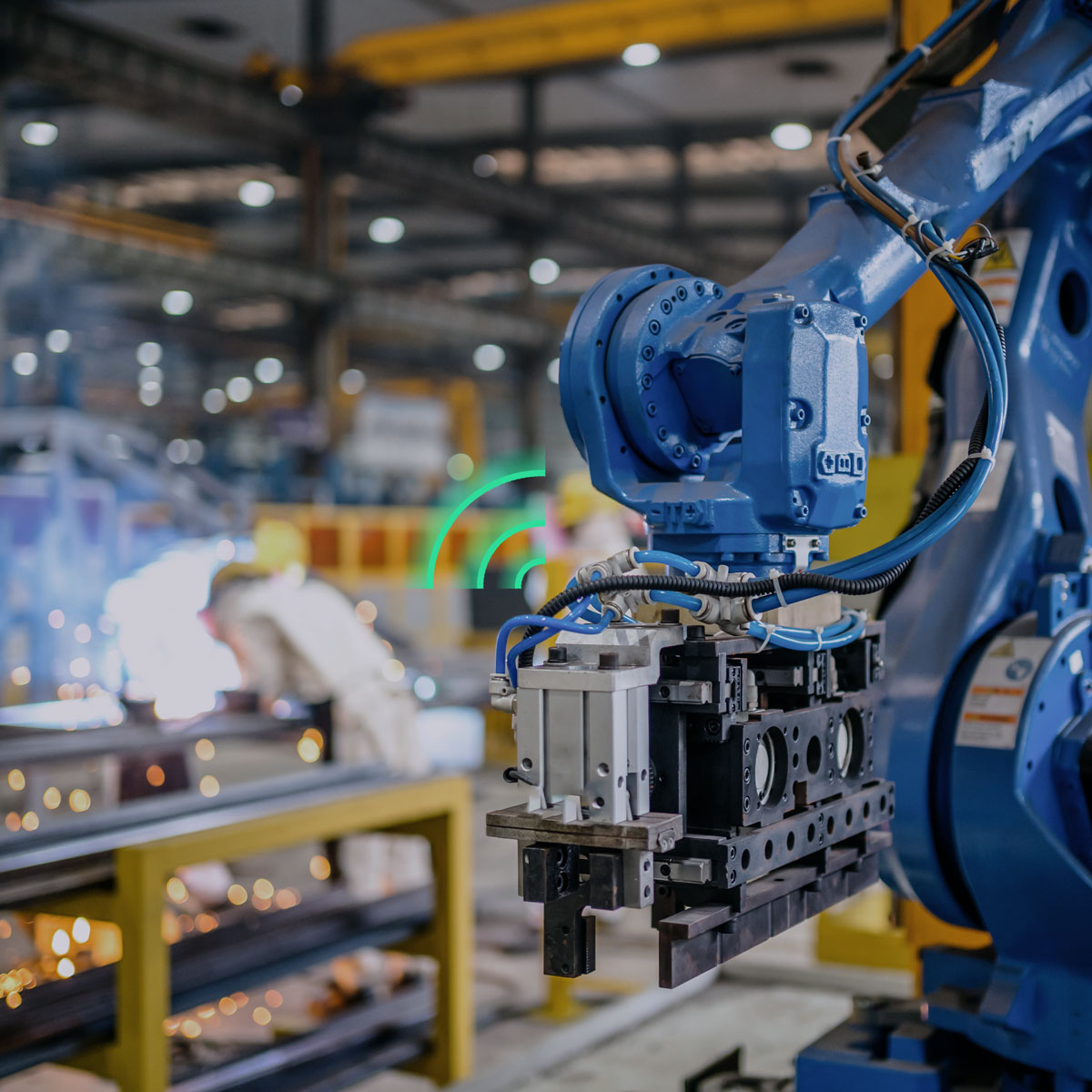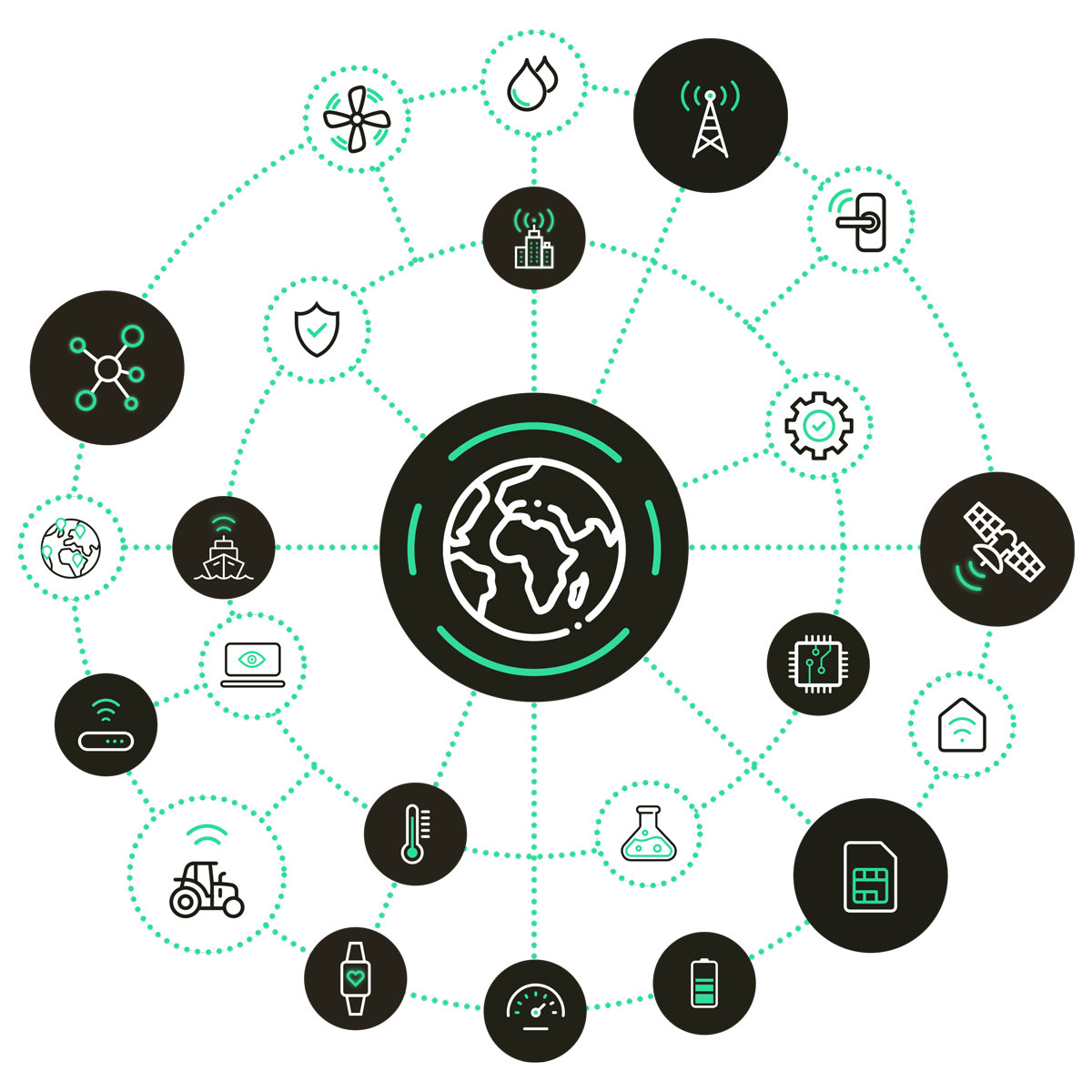This strong growth shows that IoT is now essential in construction. It helps improve safety, reduce costs, and support sustainability goals. In this article, we explain how IoT is used in construction, the key benefits and challenges, and what the future looks like for this fast-growing technology.
What is IoT in Construction?
The Internet of Things (IoT) is a network of devices that use sensors and software to collect and share data. In simple terms, IoT lets machines, tools, and devices connect and share information over the internet. In construction, this means smart job sites where workers, machines, and infrastructure stay linked. These connections make projects safer, faster, and more efficient. IoT helps the industry move from manual methods to modern, data-driven ways of working.
Construction projects are complex. They involve multiple teams, heavy machines, and strict deadlines. With IoT, managers can track activities in real time, fix problems quickly, and cut delays. IoT is not just a trend. It is a vital tool that supports safe, sustainable, and future-ready construction.
Key Applications of IoT in Construction
IoT is now a core part of construction projects. It is used to track, monitor, and improve almost every activity on a site. Below are the key applications explained in simple terms:
- Equipment Tracking and Asset Management: GPS and RFID tags help locate tools and machinery instantly. This reduces theft, saves search time, and ensures machines are used efficiently.
- Predictive Maintenance: Sensors monitor vibration, fuel, and temperature in machines. They detect early faults, preventing breakdowns and costly delays.
- Worker Safety and Health Monitoring: Wearables like helmets and vests track worker movements and health. Alerts warn if someone is fatigued, enters danger zones, or faces exposure to hazards.
- Supply Chain and Inventory Management: IoT systems track deliveries and stock in real time. Automatic alerts or reorders prevent shortages and reduce waste.
- Energy and Resource Management: Smart meters measure water, fuel, and electricity use. Managers can spot waste quickly and cut unnecessary costs.
- Remote Site Monitoring: Drones, cameras, and sensors provide live updates from sites. Managers can check progress and quality without being physically present.
- Structural Health Monitoring: Sensors in concrete and steel measure curing and stress levels. This ensures durability and compliance with safety standards.
- Site Security and Access Control: IoT cameras, alarms, and digital locks protect equipment and track entry. Solutions like real-time site security provide fast and reliable monitoring.
- Environmental Monitoring: Sensors track dust, noise, and air quality. This helps firms meet regulations and minimise impact on nearby communities.
- Connectivity for Sites: Remote projects often lack stable internet. Fixed Wireless Access (FWA) delivers high-speed connectivity without cables, enabling smooth IoT use.
.jpg?width=1200&height=628&name=IoT-in-construction-2%20(1).jpg) Real World Use Cases of IoT in Construction
Real World Use Cases of IoT in Construction
After understanding the applications, it becomes easier to picture how they work on actual projects. Here are some examples of IoT in action:
- Preventing Fuel Theft: A contractor equips excavators and bulldozers with IoT trackers. The system alerts managers when machines move outside approved hours, reducing fuel theft and misuse. This not only saves costs but also ensures accountability.
- Improving Worker Safety: A large infrastructure project provides smart helmets with fatigue sensors to workers. When a worker shows signs of drowsiness, the helmet sends an alert to supervisors. Immediate action helps reduce accidents on site.
- Ensuring Concrete Quality: Engineers install IoT sensors inside concrete foundations. These sensors track curing conditions like temperature and moisture. By analysing this data, they confirm when concrete has reached safe strength before moving to the next stage.
- Faster Site Inspections: Construction firms deploy IoT enabled drones on large sites. The drones provide live aerial footage, allowing supervisors to spot issues quickly. Inspections that once took days can now be done in a few hours.
- Avoiding Material Shortages: IoT based inventory systems monitor cement, steel, and other critical supplies. When levels drop below a set point, managers receive alerts to reorder. This prevents delays caused by material shortages.
- Hazard Zone Alerts: Workers wear IoT wristbands that track their location on site. If a worker enters a high risk area without safety gear, the system immediately notifies both the worker and site managers. This reduces chances of serious injuries.
- Monitoring Urban Site Impact: On city projects, IoT sensors measure dust and noise levels in real time. The data is shared with local authorities to prove compliance with environmental rules. This avoids fines and builds trust with communities.A great example of this in practice is Intellity, a Com4 customer that delivers IoT powered environmental monitoring solutions for construction sites. Their system measures air quality, dust, and noise in real time, helping contractors stay compliant with local regulations while minimizing environmental impact and improving neighborhood relations.
- Strengthening Site Security: A builder uses smart CCTV solutions powered by IoT. Cameras stream live footage to managers’ devices, ensuring quick action if theft or trespassing occurs.
- Managing Waste Efficiently: With IoT enabled waste sensors, bins alert managers when they are full. This allows for timely collection and reduces clutter on site. Cleaner workspaces improve safety and sustainability. A great real-world example is Sensortia, a Com4 customer that provides smart waste management solutions using IoT connectivity. Their sensors monitor fill levels in containers and transmit real-time data through Com4’s secure network, helping construction companies optimize collection routes, reduce operational costs, and support greener, more efficient waste management practices.
Benefits of IoT in Construction
These real-world examples show how IoT brings measurable value. Below are the most important benefits construction companies can gain:
Improved Safety
Safety is one of the biggest challenges in construction. IoT wearables include helmets, vests, and wristbands. They track workers’ health and movements in real time. If someone enters a danger zone, faces harmful exposure, or shows fatigue, the system alerts supervisors. These quick warnings help prevent accidents and save lives.
Cost Efficiency
Unexpected breakdowns and wastage increase project costs. IoT sensors predict when machines need maintenance and help avoid expensive repairs. Smart inventory systems also stop over-ordering or shortages. Together, these savings make projects more cost-efficient and resource-friendly.
Enhanced Productivity
Real-time data from IoT devices speeds up decision-making. Managers can spot delays, reassign resources, or adjust schedules instantly. This keeps both machines and workers productive and ensures projects finish on time. Remote monitoring further allows supervisors to handle multiple sites without being present.
Better Quality Control
Construction quality depends on how well materials and structures are monitored. IoT sensors inside concrete and steel track curing and stress levels. This data ensures buildings meet design standards and safety codes. Consistent monitoring reduces rework and builds stronger, more reliable structures.
Sustainability
Sustainability is a growing priority in construction. IoT tracks the use of energy, water, and fuel across sites, highlighting wasteful practices. Companies can cut emissions, recycle more, and comply with environmental standards. Smart solutions such as IoT-enabled waste management further support green building practices.
Faster Decision-Making
IoT delivers real-time insights instead of waiting for manual reports. Managers act quickly when they see risks, bottlenecks, or delays. This improves coordination across teams and keeps projects moving smoothly. Faster action means fewer setbacks.
Asset Utilisation
Expensive machinery should not sit idle. IoT trackers show when and where machines are used, making scheduling easier. This reduces downtime and ensures better returns on investment. Well-utilised assets cut unnecessary rental or purchase costs.
Improved Collaboration
Construction projects often involve multiple stakeholders. IoT platforms collect data in one place and share it with managers, engineers, and contractors. Companies can also expand capabilities with specialised add-on IoT products to meet project-specific needs. Everyone works with the same information, reducing miscommunication. This collaboration improves teamwork and project outcomes.
Challenges in Implementing IoT in Construction
While the benefits are clear, construction companies face hurdles when using IoT tools. These challenges often decide how quickly firms can adopt new technologies:
- High Initial Investment: Buying sensors and setting up IoT platforms costs money.
- Connectivity Issues: Remote job sites may lack stable 4G or 5G signals. In such cases, global IoT SIM cards help ensure consistent connectivity across different networks.
- Data Security Risks: Hackers can target IoT systems and steal project data.
- Integration Complexity: Older systems may not connect smoothly with IoT platforms.
- Skill Gaps: Workers need training to use IoT tools. Resistance to change is common.
- Maintenance Needs: IoT devices require updates and calibration.
- Data Overload: Too much raw data can overwhelm teams unless they use analytics.
- Regulatory Compliance: Construction firms must adapt to local IoT and safety rules.
- Battery Dependency: IoT devices run on batteries. Managing large numbers can be difficult.
Future Outlook of IoT in the Construction Industry
The IoT in the construction market will grow quickly in the coming years. According to The Business Research Company, it will reach $28.86 billion by 2029 at a CAGR of 16.5%. This growth shows that IoT is no longer optional. It is now essential for firms that want to stay competitive, follow regulations, and deliver safer, smarter projects.
Digital Twins
Digital twins are virtual copies of real buildings and infrastructure. IoT powers them with live data. Engineers use these models to test conditions, predict performance, and spot faults before they happen. This saves time and reduces errors.
Smart Cities
Governments are investing in smart city projects that use IoT to improve roads, traffic, and public services. Construction firms that adopt IoT will have an advantage in winning these projects and meeting new standards.
AI-Powered Analytics
Artificial intelligence combined with IoT makes construction smarter. AI studies IoT data to predict risks, cut waste, and improve project schedules. This leads to fewer errors and better planning.
Sustainability Mandates
Green construction is now a requirement in many countries. Rules push companies to cut emissions and use resources wisely. IoT helps track energy and material use so projects meet these goals. Firms that ignore this change will fall behind.
Policy and Regulation Support
Governments also offer support through grants, incentives, and digital policies. These efforts speed up IoT adoption and push firms to upgrade.
In short, the future of IoT in construction is more than technology. It is about meeting global trends, following new rules, and staying competitive in a digital-first world.
IoT is changing how construction projects are planned and managed. It improves safety with real-time monitoring, cuts costs with predictive maintenance, and ensures quality with continuous checks.
Challenges like cost and training exist, but the benefits outweigh them. With 5G, AI, digital twins, and smart city integration, IoT will make construction smarter, safer, and faster. Companies that adopt IoT now will lead the industry into a fully digital and sustainable future.
FAQs on IoT in Construction
Is IoT suitable for small to mid-sized construction firms?
How do IoT sensors help in construction safety?
How does IoT contribute to reducing construction costs?
IoT cuts costs by preventing machine breakdowns, reducing material waste, and lowering energy use. This keeps projects within budget.
What connectivity is needed for IoT in remote construction sites?
Can IoT improve sustainability in construction?
Yes. IoT tracks energy, fuel, and waste, helping firms follow green practices. Smart waste management makes sites more eco-friendly.
What role does IoT play in project management?
Do IoT devices work in harsh construction environments?
How does IoT support compliance with safety regulations?
Can IoT help reduce project delays?
Are IoT solutions customisable for different projects?

 CASE STUDY
CASE STUDY
.jpg)






